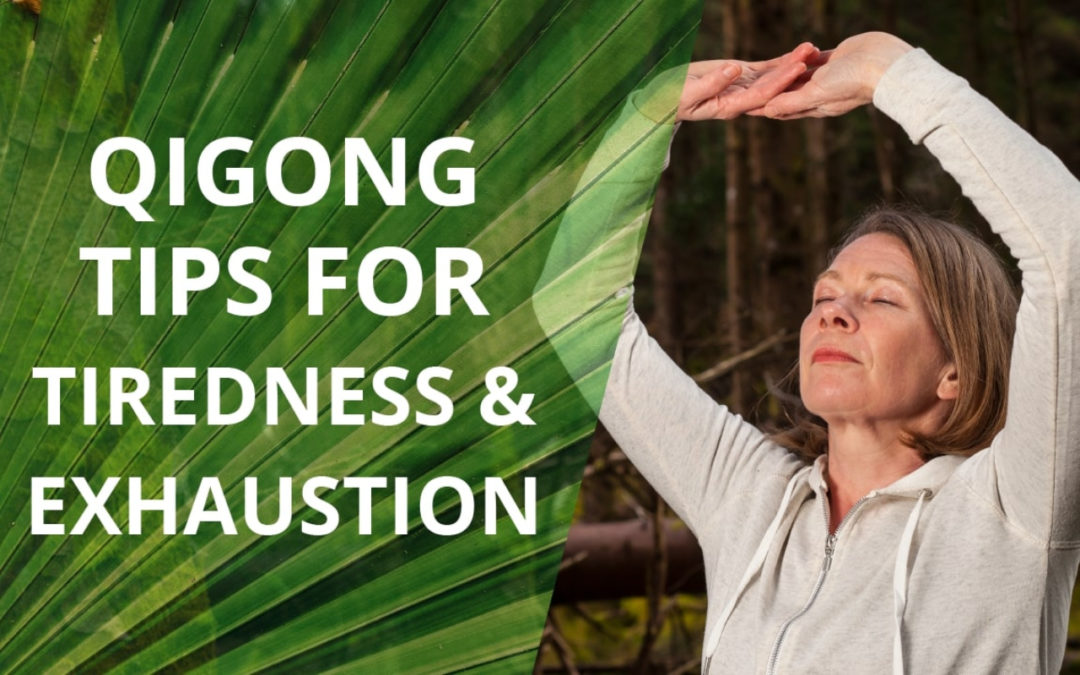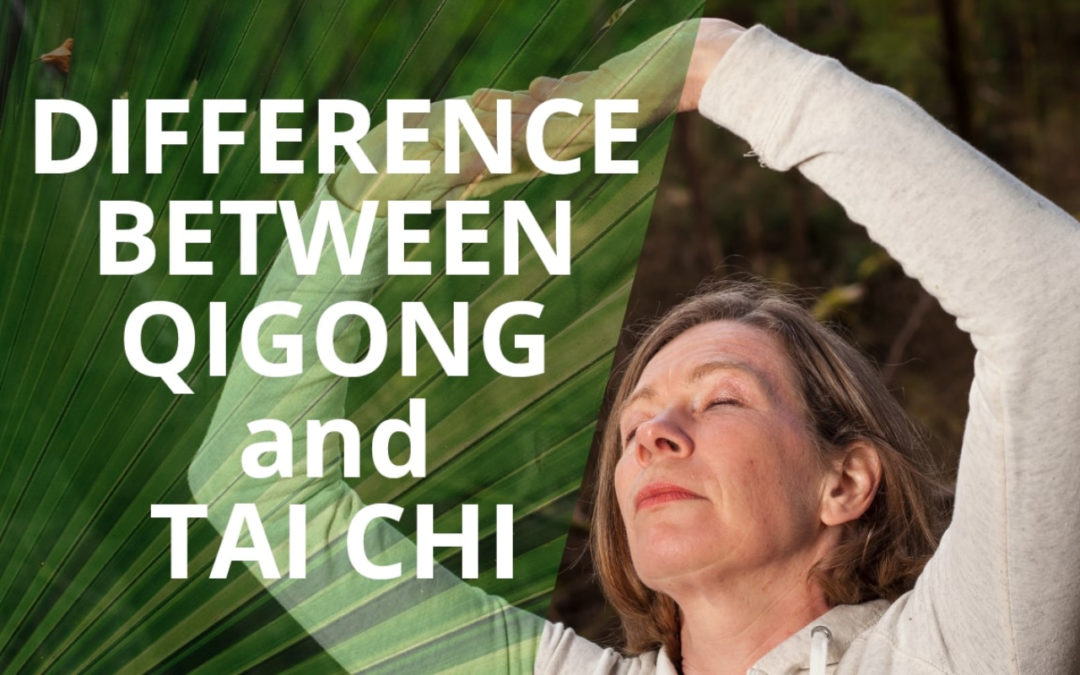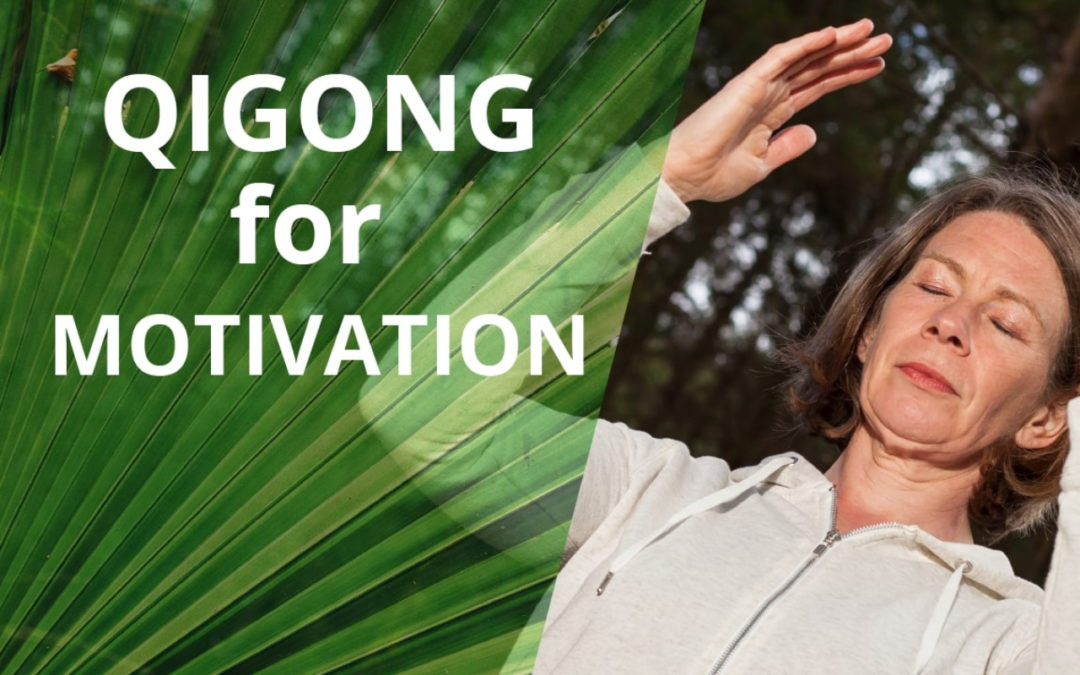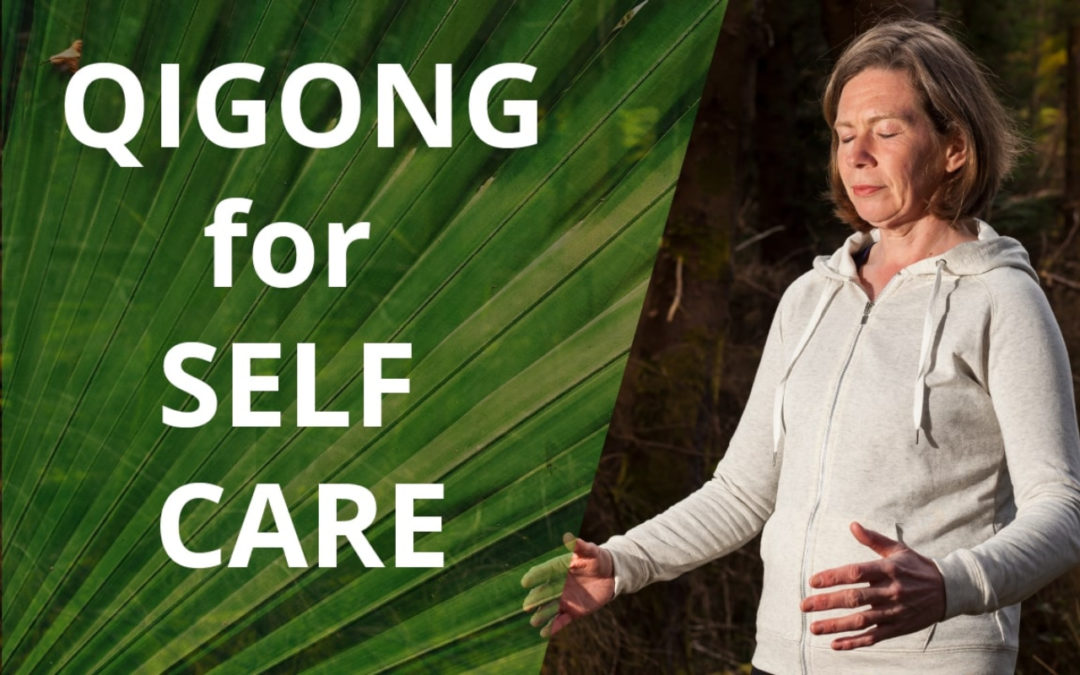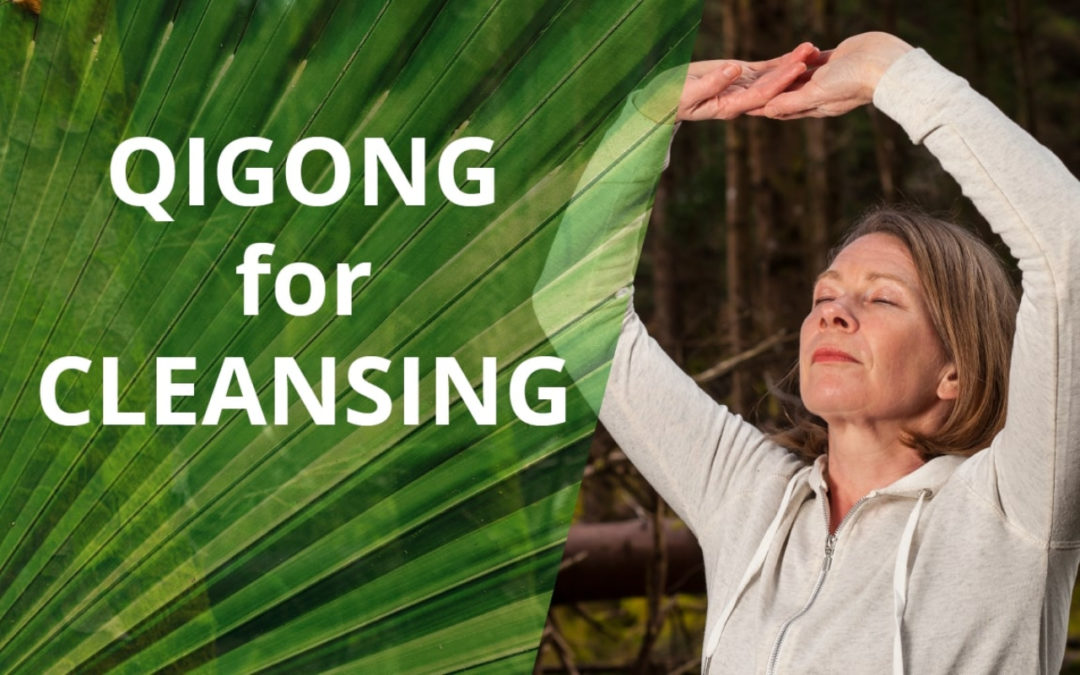
by janicetucker | 15 May 2017 | Qigong, Qigong Practice Guidelines & General Information, Qigong Routines, Qigong To Help Manage Specific Health Conditions
Some of the most common things my students say to me are, “I’m exhausted”, “I have no energy to motivate myself”, I’m tired all the time”. How many of you find yourselves saying these phrases, or ones like them, out loud? In this video I’m going to show you three fabulous tips using Qigong for tiredness. None of them take more than 5 minutes for you to achieve the transformation from exhausted to energised so get ready to follow along!
Janice Tucker is a practitioner of Traditional Chinese Medicine and Medical Qigong. She is also the founder of the Space To Relax online programme of Qigong video lessons.
Please don’t forget to subscribe to my YouTube channel by clicking the red “Subscribe” button so you don’t miss my regular videos which are full of useful health enhancing tips. These videos will help you to benefit your health and prevent illness from arising in the first place. Also please give this video a “Like” if you found it informative.
3 Tips On How To Use Qigong For Tiredness
1. Abdominal Breathing
By using simple abdominal breathing for only a few minutes you can extinguish exhaustion and increase your energy levels. This is because abdominal breathing is a more efficient way of breathing. You inhale more oxygen per breath than shallow chest breathing and thereby increase your energy. See my previous video blog on “How To Do Abdominal Breathing or Diaphragmatic Breathing” to learn this.
2. Simple Stretching
See the clip in the video to learn how to do a simple stretch up to the sky. This is a very simple way of utilising Qigong for tiredness.
Also, a simple twist of the upper body, head and neck will energise your whole spine with Qi and give you a lift in less than one minute if you are feeling exhausted.
3. Qigong Face Wash
Rub your hands together until they are hot then place them on your face. Rub your face up and down with your hands until you feel the heat has left the hands. This simple face wash is excellent for ridding any mental tiredness. It will instantly leave you feeling more awake and alive!
So, if you would like to learn some Qigong for yourself why not give it a go by heading over to the Space To Relax homepage? There you can sign up to receive three free video lessons which will be delivered to you by e-mail over the course of a few days. Also, for a free audio meditation “Calm Your Busy Mind In 8 Minutes” scroll to the bottom of the Space To Relax homepage to sign up for that.
Please don’t forget to subscribe to my YouTube channel by clicking the red “Subscribe” button. That way, you won’t miss my regular videos which are full of useful health enhancing tips. Also please give this video a “Like” if you learned much more about how to use Qigong for tiredness and exhaustion.
You can also head over to my free group on Facebook, “Space To Relax Free Group“. Leave any comments or questions for me there and I’ll be happy to answer them. By joining this group you will receive regular Qigong articles and videos with useful tips about how to use Qigong to improve your state of health.
home

by janicetucker | 8 May 2017 | Qigong, Qigong Practice Guidelines & General Information
I am constantly asked by people, “What is Qigong?”. I often start by asking if they have ever heard of Taiji (Tai Chi). If they have then I can use their level of understanding of Tai Chi to explain about Qigong. In the video above I’ll be answering the question, “What are the differences between Qigong and Tai Chi?”.
Janice Tucker is a practitioner of Traditional Chinese Medicine and Medical Qigong, and the founder of the Space To Relax online programme of Qigong video lessons.
Please don’t forget to subscribe to my YouTube channel by clicking the red “Subscribe” button in Youtube so you don’t miss my regular videos which are full of useful health enhancing tips. These videos will help you to benefit your health and prevent illness from arising in the first place. Also please give this video a “Like” if you found it informative.
The 7 Main Differences Between Qigong and Tai Chi
1. Tai Chi is a form of Qigong
Qigong is the basis of Tai Chi. The focus of your breath and mind is cultivated in Qigong practice and is the underlying foundation of Tai Chi.
2. Tai Chi is a martial art and Qigong is used for wellness and healing
Qigong utilises specific exercises for healing. Tai Chi does not do this, even though many people practice Tai Chi for healing and wellbeing purposes. Qigong does not involve any attack/defence or fighting movements as Tai Chi does although Qigong techniques can help you to improve your power and self defence techniques if you are practising Tai Chi or Kung Fu.
3. Tai Chi and Qigong make use of different movements
Qigong includes movements which you can performed from a sitting or lying down position whereas Tai Chi generally uses standing movements. Both focus on slow movements in general, although not always.
4. Tai Chi and Qigong may work with Qi differently
Often, in Qigong, separate movements focus on specific Qi functions, especially in medical Qigong. In Tai Chi the movements tend not to do this and work more on whole body function and movement of Qi.
5. The complexity of movement in Tai Chi and Qigong is different
Qigong uses very simple movements whereas Tai Chi uses more complex stances, movements and forms.
6. Tai Chi utilises forms whereas Qigong does not
Qigong does not make use of the forms used in Tai Chi but instead is based on a series of exercises that you can tailor to your individual health needs at any particular time.
7. Qigong is more adaptive than Tai Chi
Some Tai Chi movements and stances can be difficult to perform for anyone with any physical restriction or injury. Because Qigong is more of a free form practice then the you can adapt the simple movements of Qigong to your own needs and abilities.
So, if you would like to learn some Qigong for yourself why not give it a go by heading over to the Space To Relax homepage? There you can sign up to receive three free video lessons. They will be delivered to you by e-mail over the course of a few days. Also, to get a free audio meditation “Calm Your Busy Mind In 8 Minutes” scroll to the bottom of the Space To Relax homepage.
Please don’t forget to subscribe to my YouTube channel by clicking the red “Subscribe” button. That way, you won’t miss my regular videos which are full of useful health enhancing tips. Also please give this video a “Like” if you learned much more about the differences between Qigong and Tai Chi.
You can also head over to my free group on Facebook, “Space To Relax Free Group” and leave any comments or questions for me there. I’ll be happy to answer them. Also, by joining this group, you will receive regular postings of Qigong articles and videos with useful tips about how to use Qigong to improve your state of health.
home

by janicetucker | 21 Feb 2017 | Qigong, Qigong & Emotional Issues, Qigong Practice Guidelines & General Information, Qigong Routines
Recently I asked the members of my “Space To Relax Free Group” on Facebook what they would like to learn about regarding Qigong and how it can help them. One great suggestion from Kathy was about how to stay motivated, on track and avoid slipping back into bad habits. This is such a great question! Today I’m going to be talking to you about how to stay motivated and also how to use Qigong for motivation.
Janice Tucker is a practitioner of Traditional Chinese Medicine and Medical Qigong, and the founder of the Space To Relax online programme of Qigong video lessons.
Please don’t forget to subscribe to my YouTube channel by clicking the red “Subscribe” button above so you don’t miss my regular videos which are full of useful health enhancing tips. These videos will help you to benefit your health and prevent illness from arising in the first place. Also please give this video a “Like” if you found it informative.
My 7 Top Methods Using Qigong For Motivation
1. Choose something you like to do
To stay motivated for Qigong or any other exercise it is important to choose something that you like to do. By now many of you will have access to a number of Qigong methods. Choose your favourites as then you are more likely to maintain your practice.
2. Pick a regular time to practice
It is easier to stay on track with Qigong (or any good habit) if you pick the same time every day to practice. First thing in the morning works best for me as then my practice is done and I have set myself up in the best possible way for the rest of the day. Also, if I have more time at the end of the day, I’ll do more. A regular practice time will really help you to stay on track. Once you can do this, you will see how you can use Qigong for motivation in other areas of your life.
3. Keep a record of you observations
Keeping a diary or journal of your observations will allow you to see how much progress you are making. Once a few weeks have passed and you look at your journal you will see the difference between where you were before and where you are right now.
4. Practice with friends and family
Certainly with Qigong there is huge benefit in practising with friends and family. The presence of a group enhances the “Qi field” (see my blog on “What is a Qi Field?“) of everyone practising. Similarly, with other exercise such as walking, running, cycling, it is much easier to do it and stay motivated as you can encourage one another.
5. Celebrate your successes
Don’t give yourself a hard time if you don’t practice or exercise every single day. Instead focus on all the good things that you are doing. If you have set yourself a milestone, e.g. to practice 10 minutes of Qigong every day for one week, then when you achieve this CELEBRATE! Go out and do something that you love to do to celebrate that milestone. This is important.
6. Be kind to yourself
If you miss a couple of days of practice, don’t give yourself a hard time. Simply get back on track as soon as possible. Realise that you are only human. You are not a robot. You can pick up your goal and resume progressing towards it as soon as possible.
7. Start small to get motivated
If you find you have no motivation to get going then pick the tiniest thing that you feel you would like to do and just do that. Start with a small thing and build it up slowly. Over time you will find that things do get easier for you to carry forward with some momentum.
If you want to start small and learn some Qigong by practising for a few minutes each day, or getting really clever, and learning how to integrate Qigong into your day then head over to the Space To Relax homepage. There you can sign up to receive three free video lessons which will be delivered to you by e-mail over the course of a few days. Also, for a free audio meditation “Calm Your Busy Mind In 8 Minutes” scroll to the bottom of the Space To Relax homepage to sign up for that.
I’d love to hear what you do to stay motivated. What do you do to stop yourself from slipping back into bad habits? How do you use Qigong for motivation? You can head over to my free group on Facebook, “Space To Relax Free Group” and leave any comments or questions for me there. I’ll be happy to answer them. Also, you will receive regular postings with useful tips about how to use Qigong to improve your state of health.
Please don’t forget to subscribe to my YouTube channel by clicking the red “Subscribe” button on my channel page. That way, you won’t miss my regular videos which are full of useful health enhancing tips. Also please give this video a “Like” if you learned much more about how to use Qigong for self care.
home

by janicetucker | 3 Feb 2017 | Qigong, Qigong Practice Guidelines & General Information, Qigong Routines
Recently I asked members of my free Facebook group what they would like me to talk about in my videos. One great suggestion was how to use Qigong to help with self care and learning how to like ourselves again. Often we may give ourselves a hard time about certain things. We can feel we are not good enough and we don’t really like ourselves very much! If you feel like this, I can tell you, you are not alone. This is what I’ll be telling you about today; how we can use Qigong to overcome some of these feelings.
Janice Tucker is a practitioner of Traditional Chinese Medicine and Medical Qigong. She is also the founder of the Space To Relax online programme of Qigong video lessons.
Please head over to subscribe to my YouTube channel by clicking the red “Subscribe” button. That way you won’t miss my regular videos which are full of useful health enhancing tips. These videos will help you to benefit your health and prevent illness from arising in the first place. Also please give this video a “Like” if you found it informative.
What Do Stagnant Emotions Feel Like?
If you find that you beat yourself up, feel that you are not good enough or give yourself a hard time over you actions, lack of actions, bad habits, what you say or what you do then take solace in the fact that this is very common.
In terms of Chinese Medicine, our emotions and what we feel are a manifestation of our Qi (energy). They are a reflection of what is going on with the Qi in our bodies. Physical stagnation and the blockage of Qi flow can cause physical pain. In the same way the blockage of Qi can also cause a blockage or stagnation of emotions. This can result in us feeling unworthy, not good enough, frustrated, like we could do better in our job, relationships, our life in general.
How Does Qigong Help Smooth The Flow Of Emotions?
Qigong promotes the smooth flow of Qi in both the physical body (to relieve pain) but also acts to smooth your emotions. The result is that you feel calm, settled and comfortable within yourself.
Qigong also enables you to realise that there is no separation between you and nature or the environment. You are part of your environment. If you look around and see how beautiful nature is then realise that you are part of that. You can’t really be separated from it. You can blend your own Qi with the Qi of nature. Take more time to look around you and observe the beauty around you. That will create feelings of joy as you live in that present moment. You stop thinking so much about yourself and start thinking about everything as part of the whole environment.
What Can I Do Next?
All you have to do to overcome and work through these feelings is to practice a little Qigong (around 10 minutes) every day.
If this is something you want to do then you can sign up on the homepage to receive three free video lessons which will be delivered to you by e-mail over the course of a few days. Also for a free audio meditation “Calm Your Busy Mind In 8 Minutes” scroll to the bottom of the Space To Relax homepage to sign up for that. The meditation is excellent for those of you who experience feelings of not liking yourself because you get to work with your Qi in a way that takes you away from your negative thoughts.
I’d love to hear how you are getting on. You can head over to my free group on Facebook, “Space To Relax Free Group” and leave any questions for me there. I’ll be happy to answer them. Also, by joining this group, you will receive regular postings of Qigong articles and videos with really useful tips about how to use Qigong to improve your state of health.
Please don’t forget to subscribe to my YouTube channel by clicking the red “Subscribe” button above so you don’t miss my regular videos which are full of useful health enhancing tips. Also please give this video a “Like” if you learned much more about how to use Qigong for self care.
home

by janicetucker | 5 Jan 2017 | Qigong, Qigong Routines, Uncategorized
Happy New Year! This is traditionally the time of year when everyone wants to get fit and healthy. We want to get rid of the indulgences and excesses of the holiday period. This is what I’ll be showing you in this post. I have a special treat which is how to use Qigong for cleansing.
This exercise is in the paid programme of Space To Relax online video lessons. It’s very quick and easy to perform and will take you around 2 minutes once you become familiar with the sequence of movements. Watch the video and follow along. You need to be in a standing position. Note how you feel before and after the exercise. I think you’ll agree that this is a great way to use Qigong for cleansing your body and mind.
Janice Tucker is a practitioner of Traditional Chinese Medicine and Medical Qigong, and the founder of the Space To Relax online programme of Qigong video lessons.
Please don’t forget to subscribe to my YouTube channel by clicking the red “Subscribe” button so you don’t miss my regular videos which are full of useful health enhancing tips. These videos will help you to benefit your health and prevent illness from arising in the first place. Also please give this video a “Like” if you found it informative.
Method For Discharging Waste Qi With External Movement
1. Rub hands together until they feel hot.
2. Touch hands with palms together.
3. Think of fingertips and energy in palms.
4. Rub face – should feel temperature in hands and tingling/electricity. Massage face up and down 9x, not only on surface but into deep layers. Do it well and it will have cosmetic effects as it has same frequency as your body – you can’t buy this!
5. Comb forehead and then flatten hands around the back of neck.
6. Rub chest and abdomen up and down to adjust Qi in 3 upper, middle and lower areas of body. 9x
7. Rub chest horizontally. If upset with stuffy chest breathe out after this to discharge all emotion. 9x.
8. Rub abdomen horizontally 9x.
9. Rub kidneys with back of hands in circular movement. Start with large circle decreasing to small and then small circle increasing to large. Then press very hard and deep – release once uncomfortable. 9x in and 9x out.
10. Relax shoulders and shake off arms 9x.
11. Relax waist and hip joint. Bend knees. Men move to left first and women to right. Move waist and spine. The spine is a very important pathway in body. Turning neck here also helps to turn the whole spine to make it move and open up. 9x (once left and right = 1x). Turn as far as is comfortable but to cause a bit of stretching. As you turn look at back of heel.
12. Relax knees. Bend knees, at the same time bend elbows, lifting hands towards shoulders in a relaxed way. As you do this exhale. Repeat for 9x.
13. Relax ankles. Men circle left first and women right. 9x each ankle.
What Do I Do Next?
Learn the sequence of movements and practice this daily because this is the best way in which to maximise Qigong for cleansing the body, especially at the end of the day or anytime you feel tired.
Similarly, there is another way to use Qigong for cleansing (especially after alcohol consumption) in one of my previous blogs so you might want to take a look at that too. It’s called “Combatting Excess With the Ba Duan Jin“.
If you loved this exercise and want to take your Qigong practice to a whole other level of experience then head over to the website and take a look at the information on becoming a Space To Relax member.
Alternatively, if you are undecided about joining Space To Relax you can sign up on the homepage to receive three free video lessons which will be delivered to you by e-mail over the course of a few days. Also for a free audio meditation “Calm Your Busy Mind In 8 Minutes” scroll to the bottom of the Space To Relax homepage to sign up for that.
Also, please don’t forget to subscribe to my YouTube channel by clicking the red “Subscribe” button so you don’t miss my regular videos which are full of useful health enhancing tips and furthermore give this video a “Like” if you learned much more about utilising Qigong for cleansing.
In addition, you can head over to my free group on Facebook, “Space To Relax Free Group” and leave any questions for me there. I’ll be happy to answer them. Also, by joining this group, you will receive regular postings of Qigong articles and videos with really useful tips about how to use Qigong to improve your state of health.
Finally, please leave a comment in the comments box next to this video if you now have a clearer direction in which to go to use Qigong for cleansing and detoxification! I’d love to hear your tips as to what you do to feel better after overindulging in food and drink. If we all share our ideas then we can all help each other to regain the balance that’s needed in order to feel healthy and supercharged with energy! 🙂
And once again……HAPPY NEW YEAR!
home
